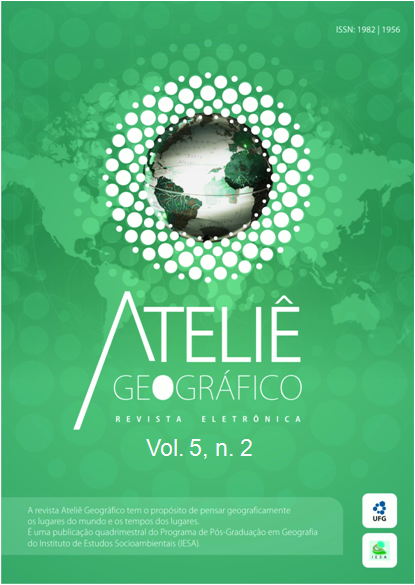THE AGROECOLOGY AND LOCAL BIODIVERSITY’ USE IN RECOVERY OF DEGRADED AREAS IN QUILOMBOLAS TERRITORIES IN MINAS NOVAS AND CHAPADA DO NORTE CITIES, JEQUITINHONHA VALLEY/MG
DOI:
https://doi.org/10.5216/ag.v5i2.15481Abstract
The Jequitinhonha Valley is a region of Minas Gerais state known for its rich biodiversity of flora and fauna of Savanna and of transition to the Atlantic Forest, which is exploited during centuries by a singular logic of managements in inherited land of indigenous peoples and quilombolas. However, the occupation of highlands in the 1970s by eucalyptus monoculture resulted in serious social consequences. Thus, several initiatives were taken, among them, by NGOs and subsequently by quilombolas associations in order to overcome serious environmental problems. This paper aims to analyze the results of agroforestry (AF) systems established on degraded areas – “peladores” – of quilombolas communities in Minas Novas and Chapada do Norte, Minas Gerais cities, that sought the recovery of these areas and food security of rural families during long periods of drought. It was found that significant progress has been achieved, such as revegetation of “peladores” by native savanna’s species and soil conservation. However, it was noted that proliferation of these systems has found limitations as a consequence of hegemonic ideas of a productivist racionality still predominant in farmers’ minds and mainly in government.Downloads
Download data is not yet available.
Downloads
Published
2011-08-26
How to Cite
DINIZ, Raphael Fernando; TUBALDINI, Maria Aparecida dos Santos. THE AGROECOLOGY AND LOCAL BIODIVERSITY’ USE IN RECOVERY OF DEGRADED AREAS IN QUILOMBOLAS TERRITORIES IN MINAS NOVAS AND CHAPADA DO NORTE CITIES, JEQUITINHONHA VALLEY/MG. Ateliê Geográfico Journal, Goiânia, v. 5, n. 2, p. 123–153, 2011. DOI: 10.5216/ag.v5i2.15481. Disponível em: https://revistas.ufg.br/atelie/article/view/15481. Acesso em: 27 dec. 2025.
Issue
Section
Articles
License
Autores que publicam nesta revista concordam com os seguintes termos:- Autores mantém os direitos autorais e concedem à revista o direito de primeira publicação, com o trabalho simultaneamente licenciado sob a Licença Creative Commons Attribution que permite o compartilhamento do trabalho com reconhecimento da autoria e publicação inicial nesta revista.
- Os autores não serão remunerados pela publicação de trabalhos na Revista Ateliê Geográfico. Além disso, os conteúdos publicados são de inteira e exclusiva responsabilidade de seus autores, ainda que reservado aos editores o direito de proceder a ajustes textuais e de adequação às normas da publicação.
- Autores têm permissão e são estimulados a divulgar seu trabalho online (ex.: em repositórios institucionais ou na sua página pessoal), já que isso pode gerar alterações produtivas, bem como aumentar o impacto e a citação do trabalho publicado (Veja O Efeito do Acesso Livre).


